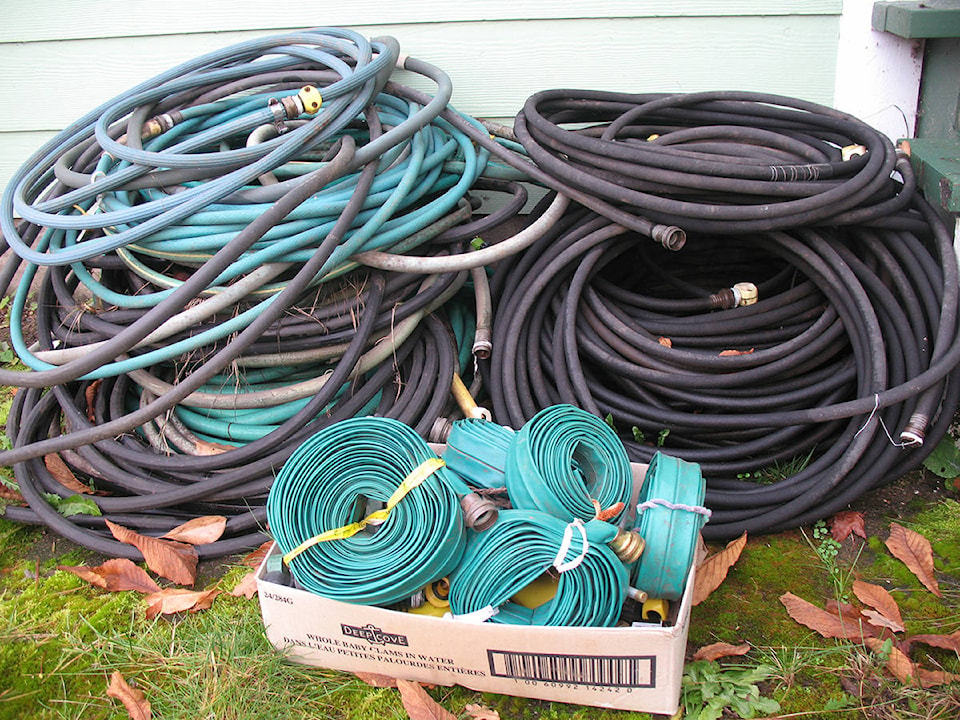By Mary Lowther
Using a sprinkler in the garden instead of soaker hoses is like having a bath to wash your face: you only needed a bit of water and you ended up getting a lot more wet than you had too. At least when you had a bath it didn’t take a lot of work to dry off your body, but when a sprinkler waters the whole garden there’s much more weeding work required.
It took years of trial and error for me to learn that soaker hoses are the best method to water my garden. I’ve tried sprinklers and hand-watering techniques and various types of soaker hoses, and found the most practical, long lasting ones are two types: the flat green ones that are perforated on one side and the solid black rubber kind that water soaks through and beads all along the surface.
Both these types can last for six plus years when handled carefully, and it’s worth it. Be careful not to let them kink and don’t turn them at too acute an angle when laying them in the garden, U-shaped pins designed for these hoses and David’s old croquet hoops hold them in place when I first lay the hoses down, and after about a day they retain their shape so the pins can be removed to use on the next hose installation. They work equally well above or below ground but usually mine sit atop the soil. Water seeps down quickly in my sandy soil so I lay hoses closer together than if it was a clayey soil, even though my soil has good tilth.
When digging or hoeing I have to take care not to damage the hoses but because most of the soil stays dry there’s not a lot of weeding to do. I move the hose out of the way when I dig or hoe around the vegetables and place it back when I’m done. At the end of the season I remove all the hoses from the water sources and unscrew the caps off the ends of the black soaker hoses. I take each one out and wind it up carefully, preventing any kinks and allowing the water to run out. I screw the ends of each individual hose together and store the hoses out of the sun. They would probably last even longer if I kept them dry, but our place is already full of too much “important stuff” and there’s no room for hoses. I don’t cover them with tarp or plastic because they might then get mouldy. If I could put them under some kind of cover where air circulates, that would be ideal. Maybe I can talk David into making one.
After disconnecting the flat green hoses I remove the end pieces and hang each one up to drain the water out, gradually moving the hose along over a period of a few days. Once the water has drained out I roll up the hose like a ribbon and tie it, storing the end pieces separately. These hoses take up so little room that they fit into a box in the greenhouse.
I use regular hoses to connect the soaker hoses to a multi-spigoted connector on the tap, and these hoses get disconnected, drained and rolled up too. I have cut them into lengths to fit the distance between each garden bed and the multi connector at the tap and next spring I’m going to label them because I’m tired of figuring out which one goes where every year.
Please contact mary_lowther@yahoo.ca with questions and suggestions since I need all the help I can get.
